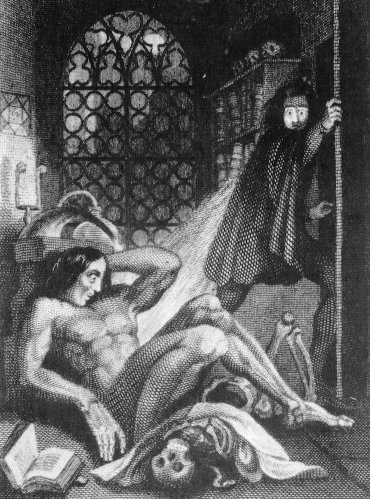The Mad Scientist
Today, the mad scientist. The University of Houston's College of Engineering presents this series about the machines that make our civilization run, and the people whose ingenuity created them.
The laboratory is down the stairs, out of the light. It's equipped with bubbling glassware and arcane electromechanical machines. The scientist himself is lonely, naive, egomaniacal. He tells "The Foundation" about his humanitarian aims, while something in his animal nature drives him to darker things.
That recurrent image of science and technology is too strong to shrug off as junk fiction. It lures us all, now and then. We find ourselves nodding in assent as the hero intones, "He dealt in things that should be left to God alone." So, where does that mad scientist image come from, and what does it mean?
Trace backward in time, and he seems always to be there. In 1817, Mary Shelley published her version of the story. She told how young Victor Frankenstein learned his black arts at the University in Ingolstadt, Germany. And there we have a clue, since that was one place where the earlier legend of Faust was centered.
The real Faust was a shadowy figure in early sixteenth-century Germany. He was a self-styled magician and hell-raiser. The Faust legend was soon recast in the language of the Protestant Reformation. The Faust we know, the Faust who sold his soul for knowledge, took his present form, not with Goethe, but in 1607, when Christopher Marlowe's play The Tragicall History of Dr. Faustus was published (shortly after his death.)
But that was also when modern science was taking shape as technology's companion. Two hundred years later, Shelley's Frankenstein took Faust a step further. Knowledge alone wasn't enough. Frankenstein had to create life as well as understand it.
So, we might well wonder, what science drives the obsession in any age? Faust studied alchemy, which then dominated science. Frankenstein rode the new forces of electrochemistry on his trip to Hell. Later nineteenth-century mad scientists added hypnotism, and then the mysterious new forces of X-rays and radium. The early twentieth century gave us, not scientists, but Faustian technologists: Captain Nemo, or the huge soul-eating mechanical city of Metropolis. Last year's mad scientist was wed to his computer. Today's Faust is a biochemist.
Each new discovery or invention calls forth new fears that we won't be able to control it. Then it calls the mad scientist up in some new incarnation. Robert Louis Stevenson added a fine twist when the monster Mr. Hyde emerged from his gentle Dr. Jekyll when Jekyll lost control of his knowledge. Jekyll and Hyde touch something about our nature that we know is accurate.
The Faustian mad scientist is not about our science-based technologies at all. It's fictional shorthand for the sound of our own inner voice. It's obvious that we can't turn our backs on genetic engineering, neural networks, or cloning. That inner voice tells us to stay wary and be afraid of Mr. Faust-Frankenstein-Hyde-Nemo. The only reason for raising the warning is that we know it's completely against our nature to actually leave that wonderful laboratory.
I'm John Lienhard, at the University of Houston, where we're interested in the way inventive minds work.
(Theme music)
Sources for various ideas in this episode can be found by clicking on the underlined links.
You might also be interested in Karl Shapiro's poem, "The Progress of Faust" which, alas, powerfully captures the popular view of science as unwholesome.http://markandrewholmes.com/faustsprogress.html
This a greatly revised version of Episode 129. Also, I do a much more extensive commentary of the implications of the mad scientist image in this talk from 2001.

From the Frontispiece of the 1831 edition of Frankenstein; or The Modern Prometheus.